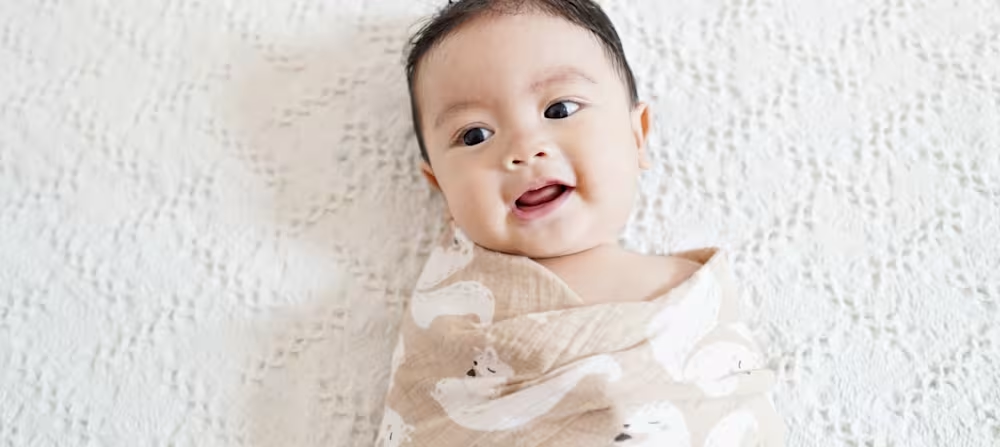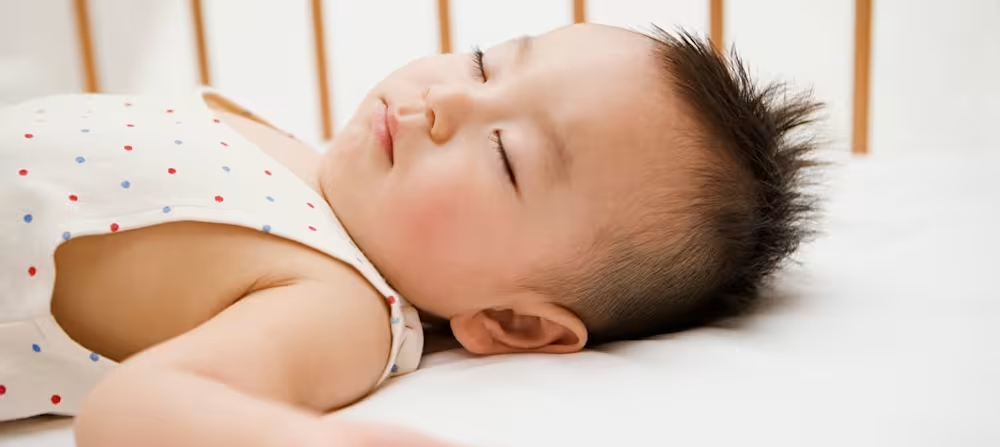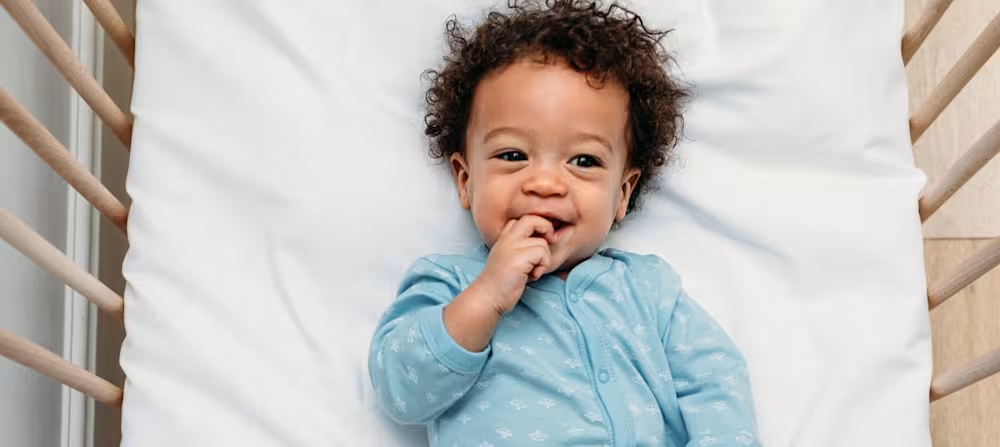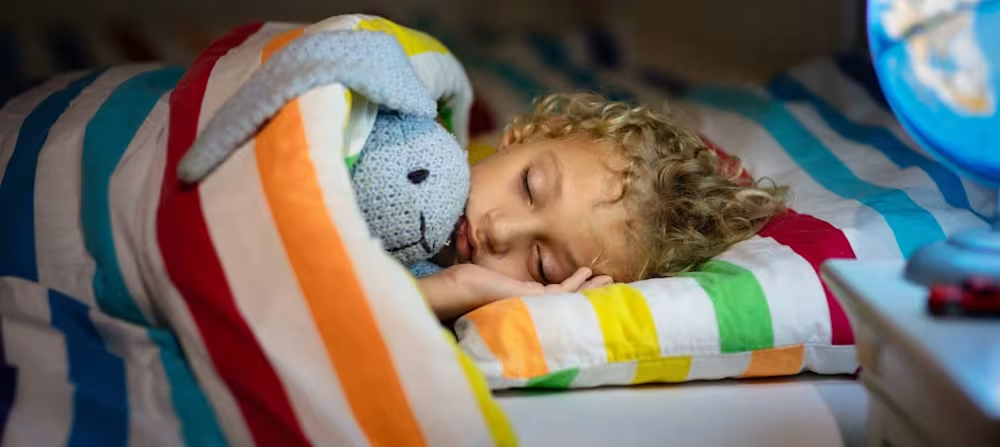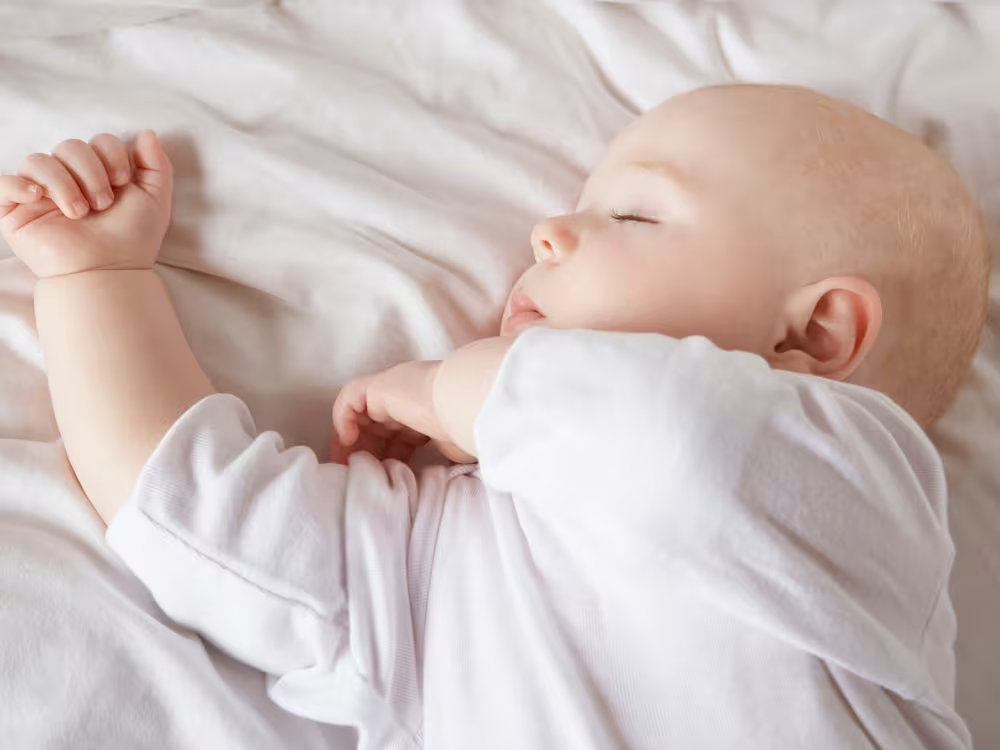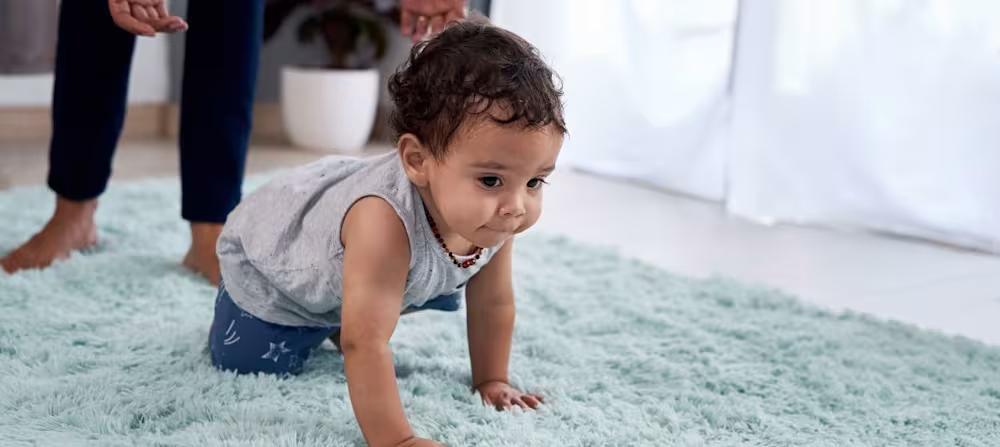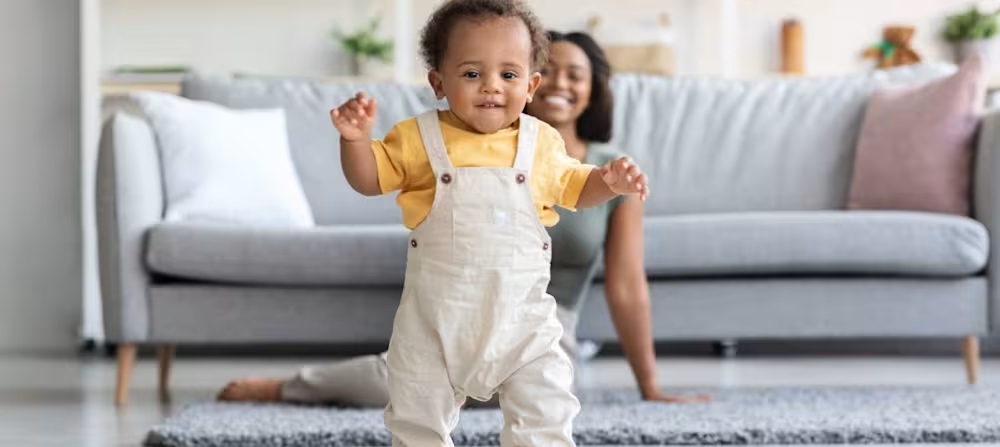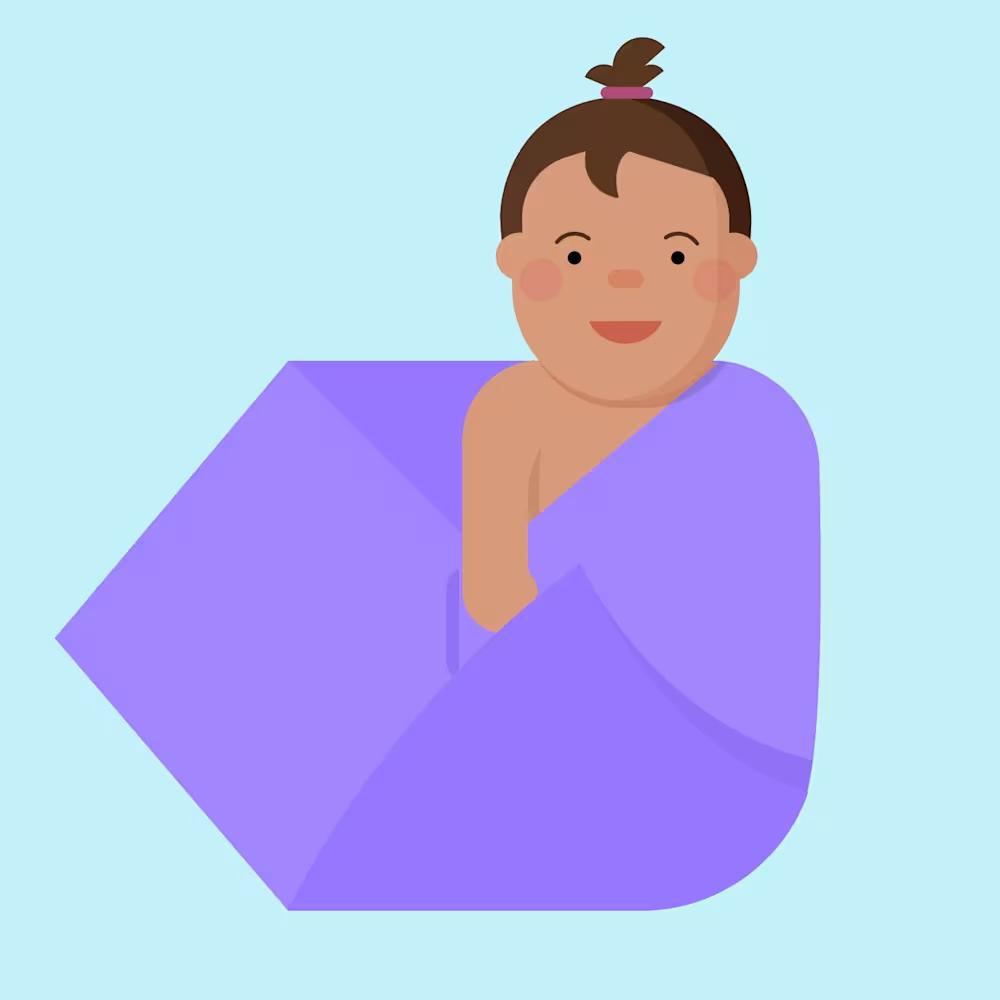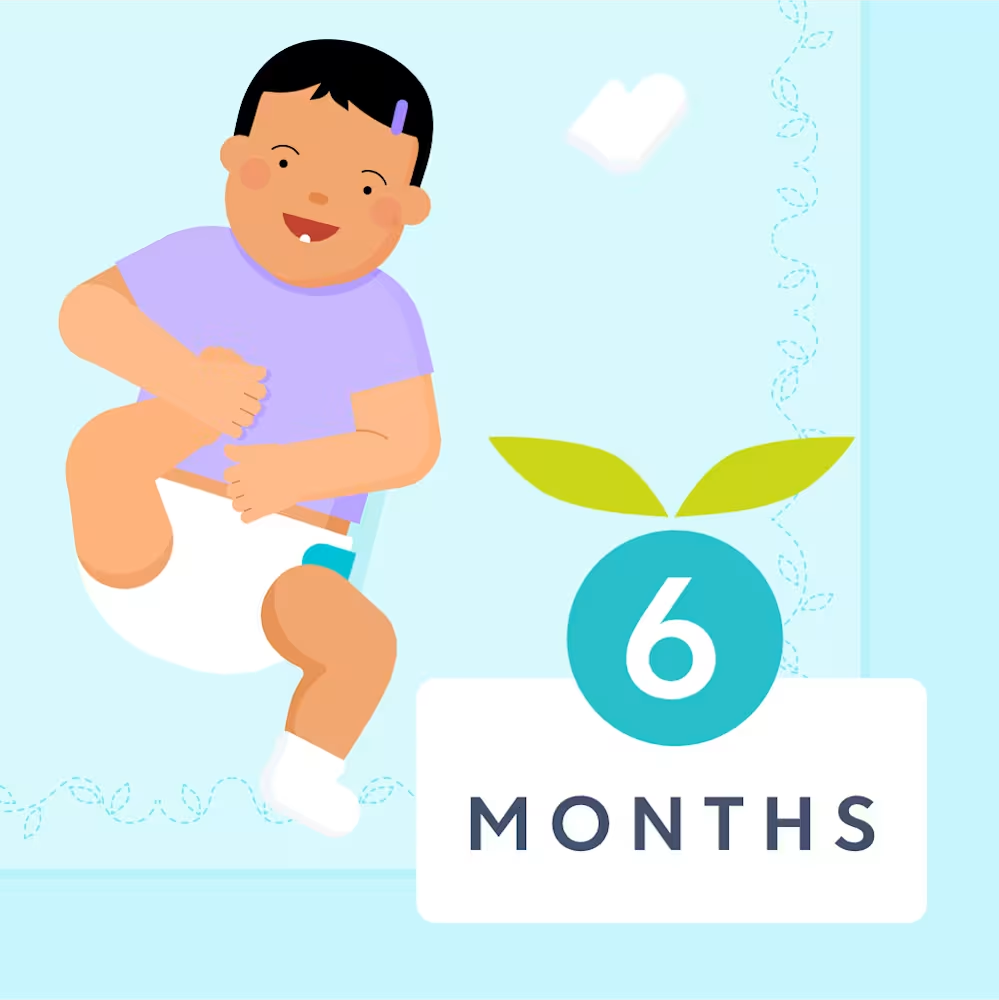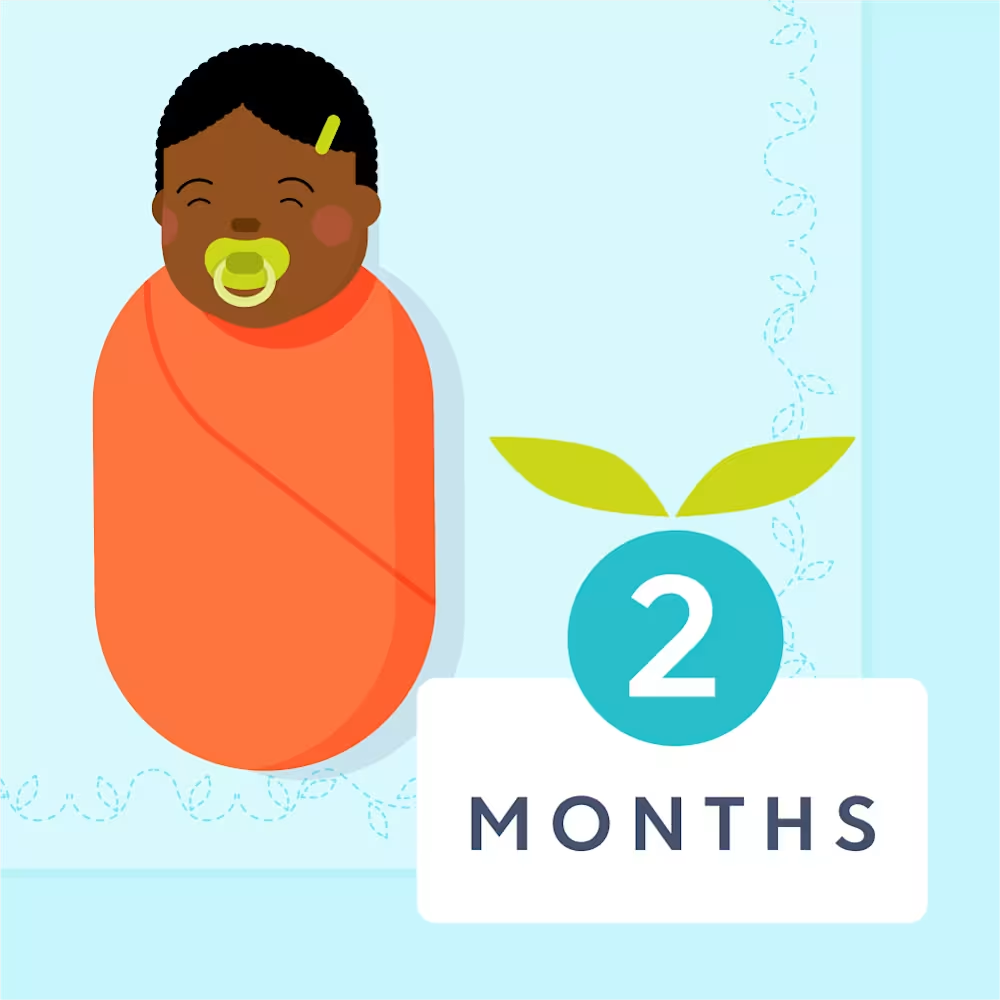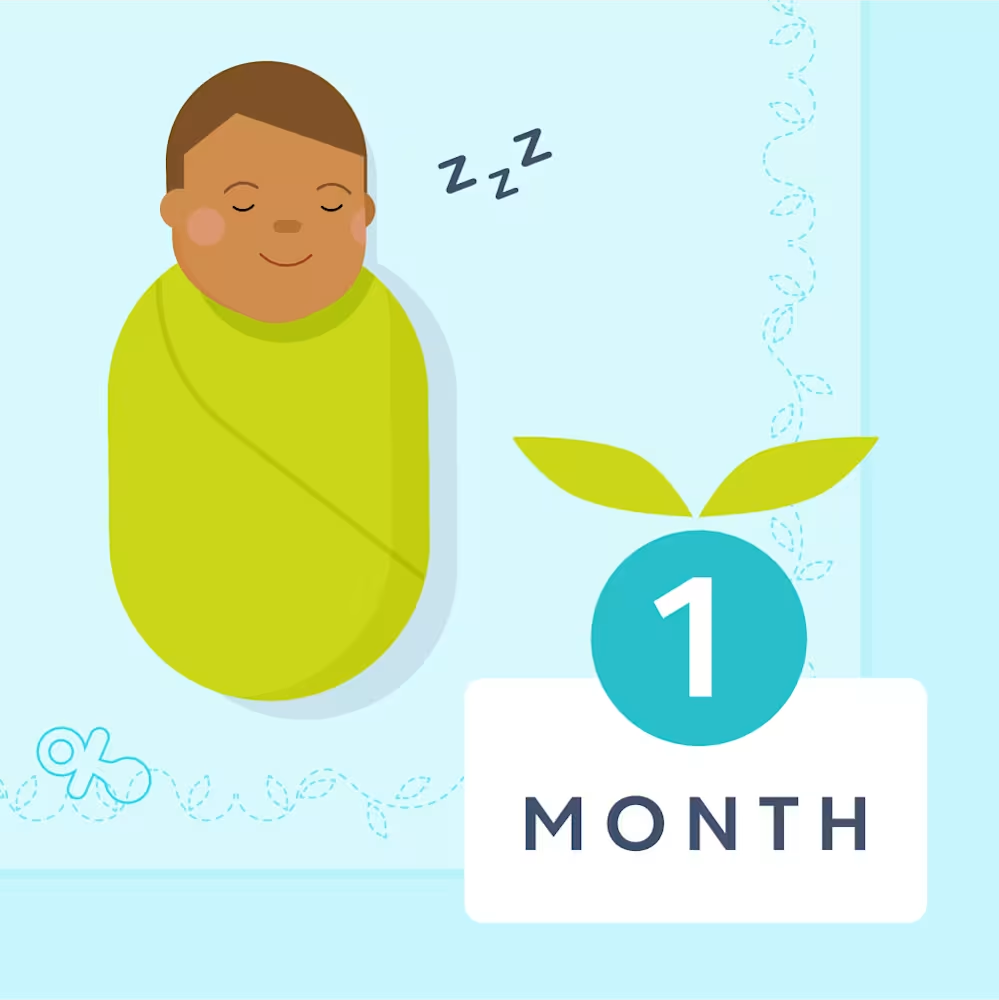Sleep Sacks: When to use, when to stop using and sizing tips by age
Updated Oct 16, 2025

Parenting involves a lot of decisions, especially when it comes to your baby’s sleep. If you’re looking at sleep sacks and trying to choose between the lemon, stripes, or cloud patterns, we can’t help you there (they’re all pretty adorable). But if you need to figure out whether you should use a sleep sack and for how long, we can help you cross those decisions off your (mile-long) list.
Table of Contents
Do sleep sacks help babies sleep?
Sleep sacks (aka wearable blankets) safely provide an extra layer of warmth without restricting a baby’s arms. When used as part of a consistent , sleep sacks can also help cue that it’s time to transition to sleep, which can translate into an easier bedtime.
The standard sleep sack forms a pouch around the baby’s legs, which allows for plenty of freedom of movement (but makes it harder for a toddler to throw a leg over the side of the crib and climb out). Will a sleep sack magically turn your baby into a champion sleeper all on its own? Probably not. However, it can safely provide warmth and comfort to your child.
If you’re wondering why you can’t just use a blanket to keep your baby warm, here’s the answer: the American Academy of Pediatrics (AAP) recommends keeping loose blankets and unfitted sheets out of a baby’s sleep space [] for the first 12 months of life to reduce the risk of sleep-related injury. Sleep sacks are a safer alternative.
How long can a baby wear a sleep sack?
You’ll want to keep size, comfort, and safety in mind. It’s a good idea to use one until at least 12 months of age since a loose blanket can increase the risk of sleep-related injury or death []. Feel free to continue using a sleep sack as long as it fits well and your child seems comfortable wearing it. For instance, it’s probably time to stop using the wearable blanket if your toddler starts regularly unzipping it, taking it off, and throwing it at your head.
When to start using a sleep sack
You can use a sleep sack from day one. However, many parents will instead opt to at naptime and bedtime. The window for swaddling is pretty short, though. The AAP recommends removing the swaddle [] as soon as your baby shows signs of starting to roll. While that’s typically between 3 - 4 months of age, sometimes it’s as early as 2 months old.
When you’re ready to (or if you skipped it altogether), a sleep sack can be used to ensure your baby stays comfortable. It’s a safe alternative to using a sheet or blanket (which, again, is not recommended for babies under 12 months of age).
When should you stop using a sleep sack
While the AAP only cautions against using blankets for infants, that doesn’t mean loose blankets are the best option for toddlers and preschoolers. Blankets tend to shift around, especially with active sleepers. Sleep sacks can help avoid all those nighttime requests for comforter adjustments. In other words, a sleep sack may help you skip the cries of, “Mommy! Daddy! Fix my blanket again!”
If your child’s comfortable in a sleep sack, it’s fine for them to wear one until they grow out of the largest size. Traditional sleep sacks (with a sleeping bag-type pouch at the bottom) generally fit children up to 36 pounds and 40 inches long. These styles typically accommodate kids up to 2 years of age, depending on their height and weight.
Toddler-specific sleep sacks (with pants-style legs instead of the pouch) can fit bigger kids, with some brands going up to size 5T. These are a good option for older children to stay warm without the hassle and worry of their blankets slipping down.
Sleep sack sizing tips by age
Sizes may vary. Be sure to consult the sizing chart for your specific brand of sleep sack.
| Age | Height | Weight |
|---|---|---|
| Premature infants | 14 - 19 in (36 - 48 cm) | Up to 5 lbs (2 kgs) |
| Newborn (0 - 3 months) | 19 - 23 in (48 - 58 cm) | 5 - 10 lbs (2 - 4.5 kgs) |
| Small (0 - 6 months) | 23 - 26 in (58 - 66 cm) | 10 - 18 lbs (4.5 - 8 kgs) |
| Medium (6 - 12 months) | 26 - 30 in (66 - 76 cm) | 16 - 24 lbs (7 - 11 kgs) |
| Large (12 - 18 months) | 30 - 35 in (76 - 89 cm) | 22 - 28 lbs (10 - 13 kgs) |
| Extra large (18 - 24 months) | 35 - 40 in (89 - 101 cm) | 26 - 36 lbs (12 - 16 kgs) |
| 2 - 3 Years (2T - 3T) | 30 - 40 in (76 - 101 cm) | 25 - 40 lbs (11 - 18 kgs) |
| 4 - 5 Years (4T - 5T) | 40 - 46 in (101 - 117 cm) | 30 - 50 lbs (13.5 - 22.5 kgs) |
How do you transition your baby from swaddle to sleep sack?
You know it’s coming. If you’ve chosen to , the time will eventually come to transition out of it. There are two options here: fast or slow.
Fast transition: You’ll need to ditch the swaddle when your baby starts to show signs of rolling (usually between 2 - 4 months old) or if they’re regularly breaking free — that loose blanket can create an unsafe sleep condition [], increasing suffocation risk. At that point, it’s time for an immediate transition: bye-bye baby burrito, hello sleep sack.
Slow transition: In other cases, you can use a more gradual approach. This is a good choice for babies who haven’t shown signs of rolling but are approaching 4 months of age and/or have been fighting the swaddle. Start by leaving one or both arms out at bedtime. You can then re-swaddle fully after the first night waking. Once your baby has had 2 - 3 nights to adjust, you can move on to arms out for the entire night, then for naps, and then finally swap the swaddle for the sleep sack.
Either way, expect some adjustment time. Whether you make a quick change or a slower one, we’ve found it’s common for babies to initially wake more once their arms are no longer confined in the swaddle. With some time, they’ll adjust to falling asleep in this new way.
Are weighted sleep sacks safe for babies?
Unfortunately, no. The AAP says to avoid all weighted sleep products [] with babies. That means no weighted swaddles, sleep sacks, sleepers, or blankets.
How to dress your baby under the sleep sack
Consider the room temperature and how many layers you need. Generally, you’ll want to dress your baby in the same amount of layers that you’d have for sleep (or maybe one additional layer if you feel it’s needed).
Don’t over-bundle. Overheating can cause an increased risk for sudden infant death syndrome (SIDS) [], so you’ll want to look out for signs that your baby’s too warm: sweating, flushed skin, or the baby’s chest feeling hot to the touch. Your infant may be comfortable in only a onesie or long-sleeved pajamas under the sleep sack, depending on the ambient temperature and thickness of the wearable blanket.
Takeaway
Sleep sacks are wearable blankets that provide warmth to sleeping children without restricting their arms. They can also cue to little ones that it's time to sleep, which can help create an easier bedtime.
The AAP recommends keeping loose blankets and sheets out of a baby's sleep space for the first 12 months of life to reduce the risk of sleep-related injury, so sleep sacks are a safer alternative.
Sleep sacks can be used from day one, however many parents opt to use swaddles for newborns until they show signs of rolling (typically around 2 - 4 months of age).
Sleep sacks can be used for babies and toddlers as well, until they've grown out of the largest size. Most styles can accommodate kids up to 2, depending on their height and weight. Some brands also offer toddler sizing that goes up to a 5T and can be used longer.
Weighted sleep sacks (and weighted sleepers, blankets, and swaddles) are not recommended by the AAP.
Sleep sacks for babies FAQ
Share article:
Note: The content on this site is for informational purposes only and should not replace medical advice from your doctor, pediatrician, or medical professional. If you have questions or concerns, you should contact a medical professional.
11 Sources
Table of Contents
Share article:
